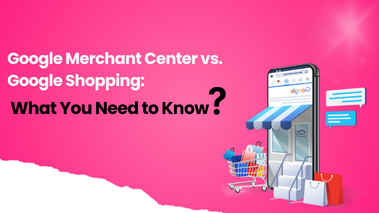How Useful AI is for E-Commerce in 2024
Published on October 28, 2024


It can be seen how AI has evolved the e-commerce industry and how it changed the way businesses operate, build their relationships with the customer and how they sell.
Beginning from proposing individual solutions based on customer data, up to creating smart helpers that help customers in their purchasing decisions, AI in eCommerce industry is a necessity in today’s world that benefits by positively impacting customer satisfaction, internal company processes, as well as by increasing revenues.
In this blog post, you will learn more on how AI is shaping the e-commerce industry, get some examples and learn about a real-life example of the company that is already using it.
AI in Modern E-Commerce
AI augments numerous aspects of e-commerce work like client personalization, suggestions of products, and stock control. Key areas where AI is making an impact include:
Personalised Shopping Experience: Neural networks are used to quantify customers’ preferences and hence recommend the product that serves the customer interest hence enhancing engagement and sales.
Automated Customer Support: Using AI, customers’ questions are answered round-the-clock cutting back the cost of responding to a customer.
Inventory and Supply Chain Management: AI reviews existing stock with the aim of aligning it with that of the actual demands, which assists e-commerce companies.
According to the recent survey more than 70% e-commerce companies felt that AI is imperative to remain relevant in the market which proves the aptness of AI in the e-commerce industry.
5 Ways AI is Revolutionising E-Commerce
1. Recommendation of Products
Other tools based on artificial intelligence, for example, recommendation systems, ascertain customer’s activity, like history of visits, previous orders, etc., and offer pertinent products. This improves the image of the store and; makes customers purchase more stock hence increasing revenue.
Example: Amazon’s recommendation system is an AI that processes millions of customers’ interactions. From the study, the following benefits were realised; Amazon’s ability to recommend products relevant to the specific users has enhanced their sales by as much as 35% caused by product recommendations alone.
2. Under the automated technologies, the customer service and chatbots can be considered.
AI chatbots also deal with basic customer concerns as to order status, returns, and product inquiries. Always on, these chatbots increase the levels of customer experience satisfaction because of the prompt response.
Example: H&M utilize an AI-controlled chatbot in their webpage for product information and order status, fashion advice. They have also valued improvements in the efficiency of responses from this AI chatbot and increased customer interactions on H&M’s digital interface.
3. Visual Search and Image Recognition
Visual search allows customers to upload images and find similar products, making it easier to locate items that match their preferences. This feature uses AI-driven image recognition to suggest products based on color, style, and pattern.
Example: ASOS, a global online fashion retailer, has implemented AI-based visual search functionality. Shoppers can upload photos of clothing or accessories, and ASOS recommends similar items from its catalog, enhancing product discovery.
4. Demand Forecasting and Inventory Management
AI uses predictive analytics to forecast demand, helping e-commerce businesses optimize their inventory. By analyzing past trends, seasonal patterns, and current market conditions, AI enables accurate stock predictions, reducing stockouts and overstock situations.
Example: Walmart uses AI-driven demand forecasting tools to manage inventory. By accurately predicting demand, Walmart minimizes stockouts and excess inventory, ensuring products are available when customers need them.
5. Dynamic Pricing Optimization
AI-powered pricing tools adjust prices based on demand, competitor pricing, and other market factors in real time. This enables e-commerce businesses to stay competitive, attract more customers, and maximize profitability.
Example: eBay uses AI for dynamic pricing, adjusting prices on high-demand products to match competitors. This approach has helped eBay stay competitive, increase conversions, and maximize sales.
How to Use AI in E-Commerce
If you’re exploring how to use AI in e-commerce, here are some practical ways to integrate it:
- Start with Personalized Recommendations: Implement AI-driven recommendation engines to provide customers with tailored product suggestions, increasing engagement and sales.
- Utilize Chatbots for Customer Service: AI chatbots can handle routine queries, freeing up customer service agents to manage more complex issues and reducing response times.
- Leverage Dynamic Pricing: AI-powered pricing tools allow you to adjust prices based on demand and competitor data, helping you remain competitive.
These applications demonstrate how e-commerce businesses can use AI to enhance customer experience, optimize operations, and drive revenue.
Case Study: AI in E-Commerce at Sephora
Company: Sephora – A global beauty and cosmetics retailer
Challenge: Sephora wanted to improve customer engagement on its digital platforms, increase online sales, and provide a personalized shopping experience. The company faced challenges in managing high volumes of customer inquiries, personalizing product recommendations, and optimizing pricing.
Solution: Sephora implemented an AI-driven e-commerce strategy, including:
- AI-Powered Chatbot for Customer Support: Sephora introduced an AI chatbot to assist customers with common queries, order tracking, and personalized product recommendations.
- Personalized Product Recommendations: The AI recommendation engine analyzed customer preferences and purchase history to suggest products tailored to each customer.
- Visual Search Functionality: Sephora integrated visual search, allowing customers to upload images and receive product recommendations based on the style and color of the items.
Results:
- 25% Increase in Online Sales: Personalised recommendations encouraged customers to explore more products, increasing average order value.
- 30% Reduction in Customer Service Workload: The AI chatbot handled routine inquiries, reducing the load on Sephora’s customer service team.
- Enhanced Customer Satisfaction: Visual search and personalized recommendations improved customer experience, resulting in higher satisfaction ratings.
Sephora’s AI-driven transformation demonstrates how AI can improve customer engagement, increase sales, and streamline operations in e-commerce.
Benefits of Using AI in E-Commerce
AI provides multiple advantages for e-commerce, helping businesses deliver better customer experiences and optimize operations. Here are the primary benefits:
- Improved Customer Experience: AI enables personalized shopping experiences, increasing customer satisfaction and loyalty.
- Enhanced Operational Efficiency: AI automates routine tasks, such as customer service and inventory management, reducing costs and freeing up staff.
- Better Demand Forecasting: Predictive analytics enable more accurate demand forecasting, reducing stockouts and overstock situations.
- Increased Sales: AI-powered recommendations and dynamic pricing attract customers and drive conversions, increasing revenue.
Competitive Advantage: By leveraging AI, e-commerce businesses can differentiate themselves in a competitive market, providing unique features like visual search and personalized recommendations.
Future Trends: How AI in E-Commerce Will Evolve
The future of AI in e-commerce is promising, with emerging trends poised to shape the industry further. Here are some trends to watch:
- AI-Enhanced Augmented Reality (AR): AI and AR will allow customers to “try on” products virtually, such as clothing or makeup, creating a more interactive shopping experience.
- Voice-Activated Shopping: AI will integrate with voice assistants to enable hands-free shopping, making it easier for customers to browse and order products.
- Sustainability-Focused AI Tools: AI will support sustainable practices, such as optimizing packaging, reducing returns, and managing eco-friendly supply chains.
- Hyper-Personalization with AI: AI algorithms will offer even more tailored recommendations based on a comprehensive understanding of each customer’s preferences, style, and behavior.
- AI-Powered Loyalty Programs: AI will enhance loyalty programs by providing customized rewards and incentives, encouraging repeat purchases and customer loyalty.
Practical Tips for Implementing AI in E-Commerce
If you’re looking to integrate AI in your e-commerce business, here are practical steps to begin:
- Identify Key Areas for AI Use: Focus on areas where AI can bring immediate benefits, such as personalized recommendations, customer support, or inventory management.
- Choose AI Tools that Align with Your Goals: Select AI solutions tailored to your business objectives. For instance, use recommendation engines to boost sales or chatbots to enhance customer service.
- Invest in Employee Training: Train your team on how to use AI tools effectively, ensuring they understand the technology and how it benefits the customer journey.
- Monitor and Optimize AI Systems: Track key performance indicators (KPIs) to measure AI’s impact on your business and make adjustments as needed.
Conclusion: Embracing AI for E-Commerce Growth
In 2024, AI is essential for e-commerce businesses looking to improve customer experience, streamline operations, and increase revenue. Sephora’s case study illustrates how AI-driven solutions can enhance engagement, drive sales, and optimize customer service. By understanding how to use AI and integrating it into operations, e-commerce companies can stay competitive and deliver innovative shopping experiences that attract and retain customers.
Digital Marketing Service from DigitifyU
If you’re ready to explore AI-driven solutions for your e-commerce business, DigitifyU offers tailored digital marketing and AI integration services to help you scale. Contact us today to discuss a strategy that aligns with your e-commerce goals.

About Alagar Raja
Alagar Raja is the founder of DIGITIFYU a lead generation agency for coaching businesses and health Industries. He aims to help coach businesses and health Industries. Connect with him on LinkedIn.




